Consider Your Study’s Objectives In Light of Common Power System Models
A grid integration study provides data and analysis on how a power system will function under different renewable energy scenarios. To a large extent, that data and analysis – and what it tells decision makers – depends on the power system model you choose for your study.
Different power system models answer different questions, and serve different objectives. Thinking about the objectives served by common power system models can help you refine your study’s objectives, and can jumpstart your thinking on the data you will need, how to collect it, the make-up of your TRC and MWG, and more.
Main Points
- The three most common power system models for grid integration studies are: capacity expansion models, production cost models, and power flow models. Each serves different purposes, and has its own data and modeling capacity needs.
- A best-in-class grid integration study uses all three models—however, many grid integration studies focus only on one or two.
- Choosing a power system model or models should be done in parallel with defining your study’s objectives.
First, Read About Capacity Expansion Models
Capacity expansion analyses identify where, when, how much, and what types of generation and/or transmission resources can provide reliable electricity supply at the lowest possible cost. They take into consideration factors such as projected demand, policy, technology and fuel prices, and more.
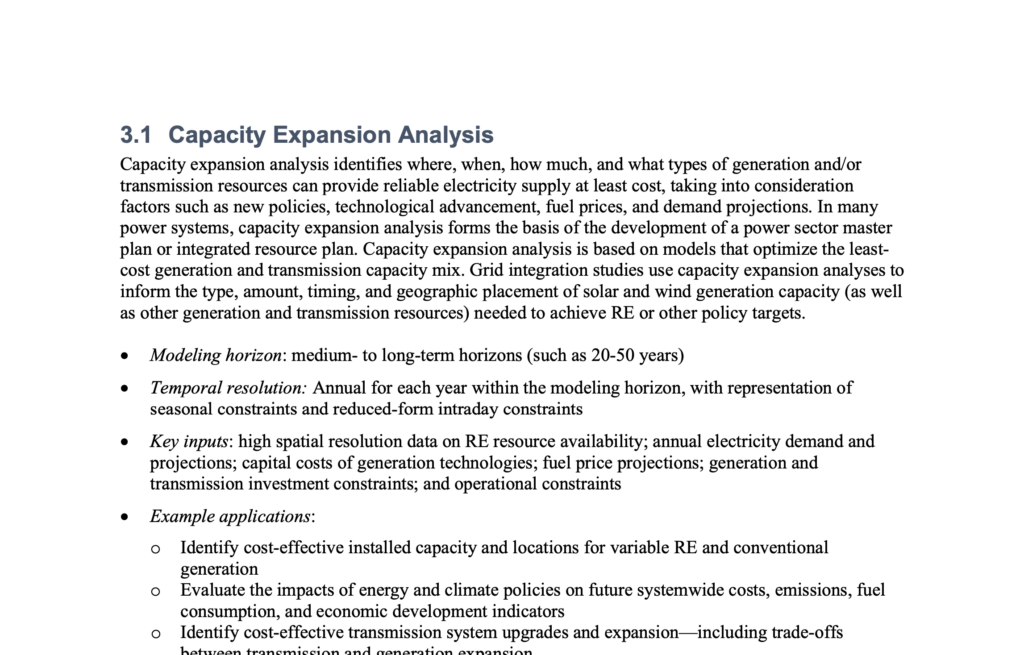
Read Excerpt: Page 6 of Variable Renewable Energy Grid Integration Studies: A Guidebook for Practitioners by NREL.
Now, Read About Production Cost Models
A production cost analysis considers the impacts of one or more variable renewable energy penetration scenarios on power grid system operations. These analyses focus on minimizing the operational cost of different future scenarios. Importantly, production cost analyses do not evaluate capital costs of new generation or transmission assets. These capital costs and investment decisions are considered in a capacity expansion model.
By contrast, a production cost model assumes that investment costs are sunk costs and focuses only on the operational costs and technical characteristics of the power system being studied.
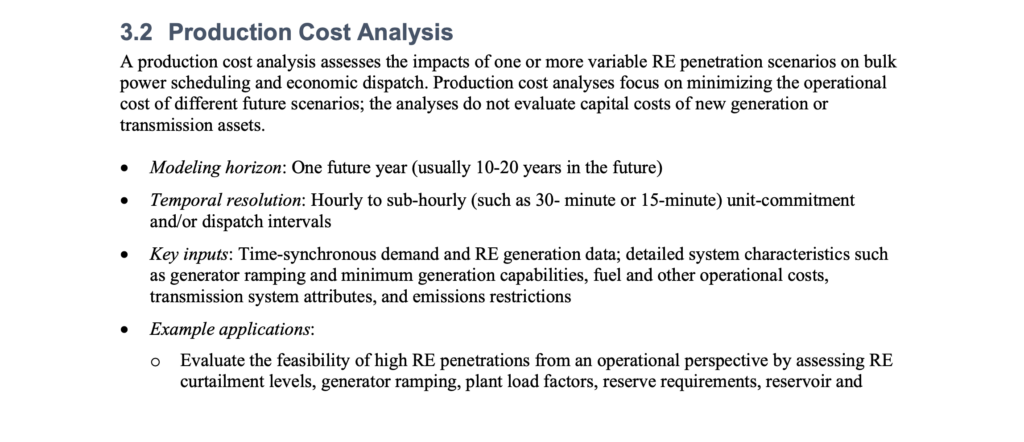
Read Excerpt: Pages 6-7 of Variable Renewable Energy Grid Integration Studies: A Guidebook for Practitioners by NREL.
Next, Read About Power Flow Models
Power flow analyses explore the stability and reliability of the transmission system under different renewable energy penetration scenarios.
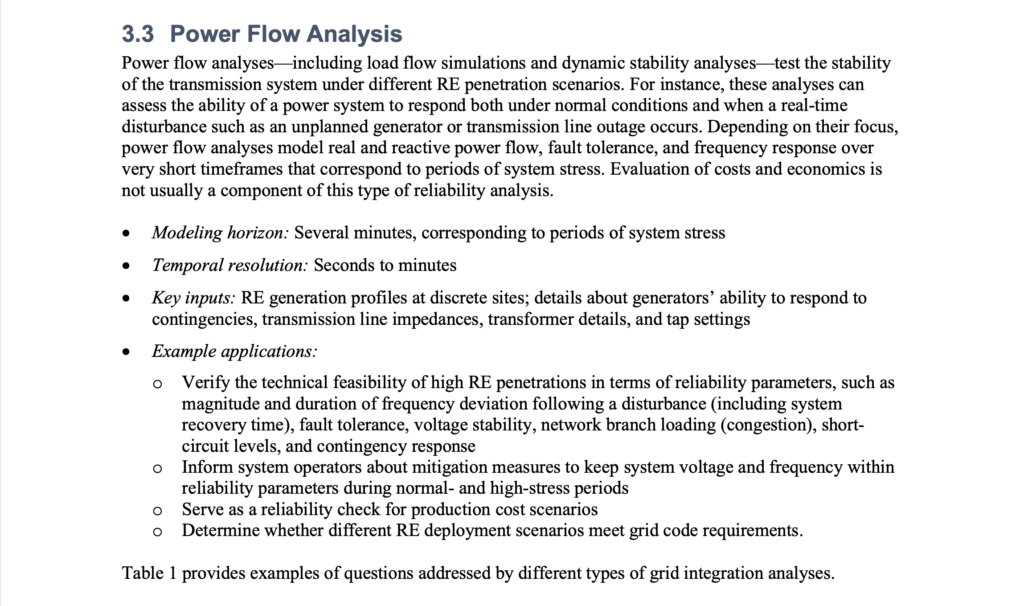
Read Excerpt: Page 7 of Variable Renewable Energy Grid Integration Studies: A Guidebook for Practitioners by NREL.
Now, Think About Your Study’s Objectives
Your choice of model or models depends on the questions you need the grid integration study to answer.
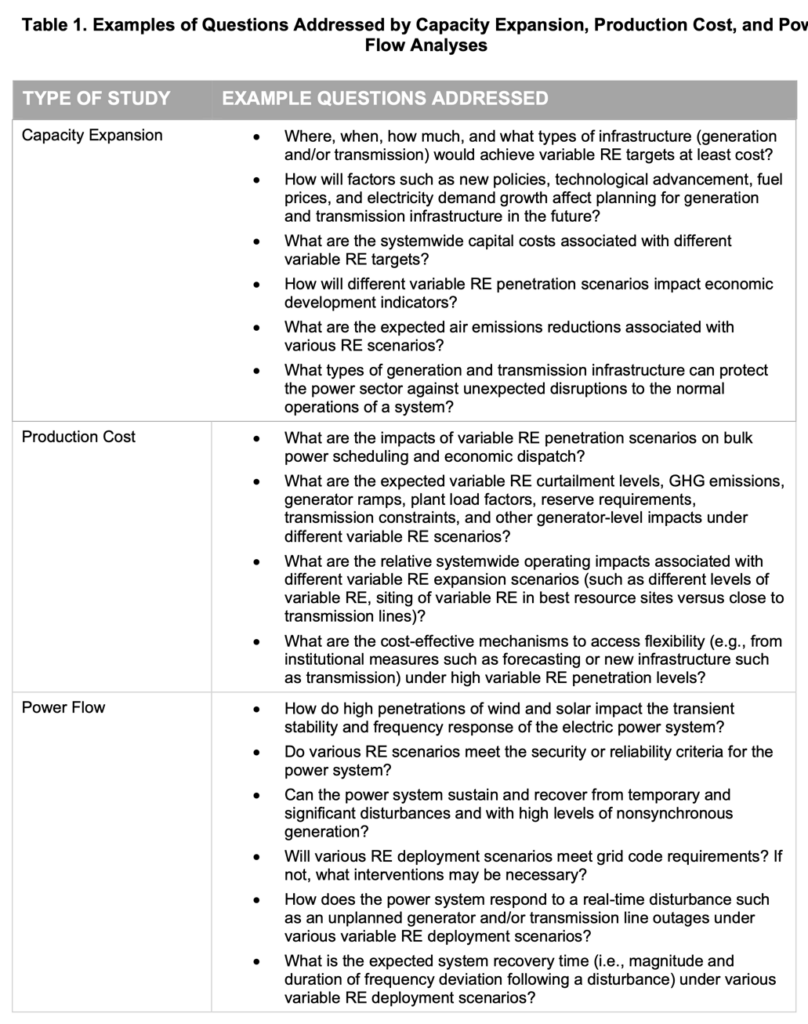
Read Excerpt: Table 1 on page 8 of Variable Renewable Energy Grid Integration Studies Guide: A Guidebook for Practitioners by NREL.
Finally, Consider How These Models Inform One Another
A grid integration study can often be an iterative process, with one analysis informing another. It is possible that you do not yet have the data and analysis needed to undertake a study that answers your questions—you may first need to do another study to get that data and analysis.
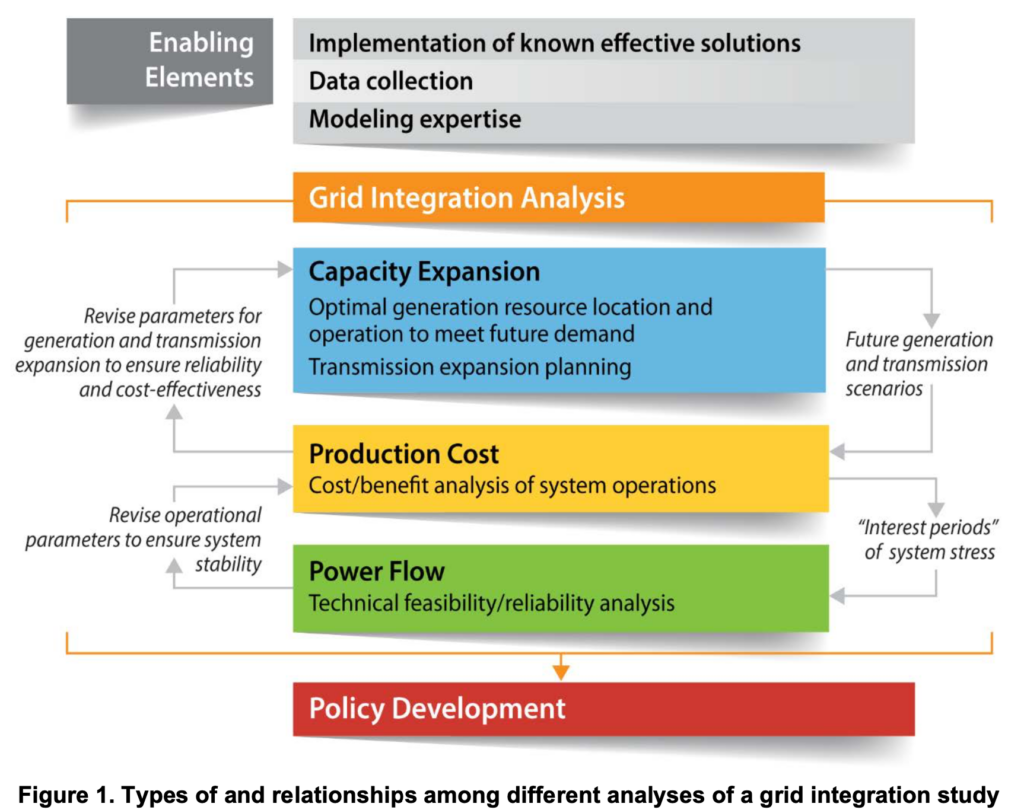
See: Figure 1 on page 5 of Variable Renewable Energy Grid Integration Studies Guide: A Guidebook for Practitioners by NREL.
Suggested Actions & Next Steps
- Consider the questions addressed by the various power system models above. List the questions you have, and the power system models you may need to answer them.
- Review case studies of effective grid integration studies, paying attention to their objectives, findings and models used. Refine your list of questions, as needed.
- Consult your network, and the stakeholders you have identified for your TRC. Discuss your questions with them, and refine based on their input. Are they aware of research, studies, or analyses that have addressed these questions in your power system recently?

